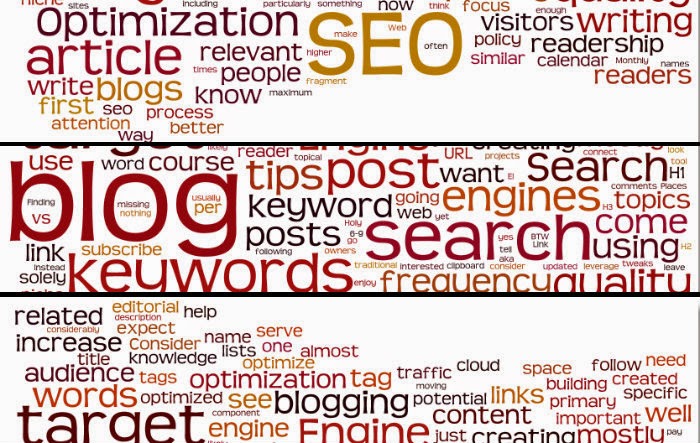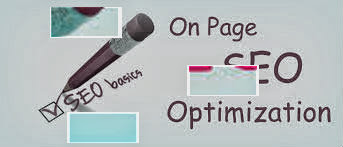What are the 5 most Valuable Guidelines to Keep in mind about On-Page Search engine Optimization (SEO) for Blogs?
Let your blog be found for its main niche keywords by utilizing on-page SEO tips mentioned here. Creating blog posts as per the on-page optimization rules is one of the best techniques to write blogs that actually rank in all of the major search engines.
This will help your blog gain a lot of free search traffic that is considered organic and natural. Once your blog is well optimized using the on-page techniques you could use other some of the best online advertising techniques to promote your blog further.
So, here is a detailed list 5 fundamental points to remember while creating new blog posts
If you use the below mentioned tips to improve your blog, i am sure it will help your blog gain good web traffic and you will start seeing spikes in the number of daily visitors for your blog. Well, blogging is not only about writing content, but also about making your content more visible, readable, and shareable!
I know, there could be many other points that we should keep in mind while optimize your content for better search engine rankings, but i have mentioned the very basic points that every blogger must use or keep in mind while making new posts every time. AND, even if you follow these 5 points, your blog will be 75-80% on-page SE Optimized!
#1 Using Heading and Meta tags for title, description, and keywords
- Always include an SEO meta tag for title ( 60- 70 characters long). Keep your most important keywords at the starting of the title. Make your titles unique.
- Use custom url for every post. If you don’t use a custom url for your posts, then your post will take its default value (that is from the title). So, use custom urls and remove stop words as they don’t have any valve and are ignored by search engines while they crawl your post. Use important keywords in the beginning of the url.
- Make a meta description of 150-170 characters for every post and include main keywords in it. But, don’t make it a collection of keywords, but it should a mix of 2-3 sentences.
- Though, SEO Keyword tags have lost their importance for Google indexing, but use them as other search engines might consider them while ranking your post. Don’t use any keyword more than 3 times and the maximum length of all the keywords should not exceed to 150 characters.
There are six types of heading tags available to you which you can use in your post. As per their priority they are : H1, H2, H3, h4, H5, and H6. Though, H1, H2, and H3 heading tags are most important for SEO and you should use them at least for once in each of your blog post.
- H1 tag must be used only once in your blog post and that is for the title. Many of the bloggers use H2 tag even for the post title. WordPress blogs are great compared to Blogspot in this sense. By default, Blogspot blog uses H2 tag for title. I think you should change it to H1 tag.
- Always include a heading or sub title in your posts. Before starting a paragraph, use a heading or sub title and use H2 tag for it.
- Use H3 tag for other sub-headings.
- There is a confusion in Blogspot about heading. So, if you write a sub title, just below title, then give it a heading tag rather than a sub heading tag.
The search engines cannot detect images as compared to the human eyes, and that’s why implementing the Alt tag is important. If the search engines are unable to detect what your images are about, then they will not be able to showcase them in the image search results. This occasionally lowers the visibility and exposure of a given site.
To solve this, ensure you insert the alt text with short descriptive phrases whenever you are fixing an image in any of your pages. You can also make use of various relevant keywords, but being careful to evade keyword stuffing. Also use Caption for your images.
 |
| On-page SEO is made up of many thing |
#2 Freshness is favored : update your blog or website frequently
A blog reduces its perceived value when it stays for long without being updated. A blog is considered fully Search engine optimized when there is a regular flow of fresh content on it. This is because search engines are easily able to notice whether you are making frequent updates to your blog or website.
Having your blog fresh also indicates that you are surely taking care of it. If your blog content is out of date or has not been updated for a long period, then it’s surely going to loose some of its visibility in search results. To make your content clean all the time, carry on regular blogging, add new pages, and make changes to the existing content and fix broken links.
Also, there is one more important thing to notice about fresh content : other content syndication platforms, RSS directories, content hungry systems are going to drive a lot of extra traffic when there is new updates or content is published on your blog.
You may have notice this that whenever you publish a new post there is a clearly noticeable new high traffic waves to your blog and this continues till few days more. So, every new post adds new traffic to your blog and it starts getting more traffic with every new blog post! This is true, believe me!!
#3. Snubbing duplicate content
The duplicate work generally means that you contain identical or nearly matching content on over and above one page. This can regularly occur without your knowledge. One of the most usual errors is the replication of the homepage.
For instance:
· http://www.domain.co.uk
· http://domain.co.uk
· http://domain.co.uk/home
· http://www.domain.co.uk/index.html
· http://domain.co.uk/default.aspx
When the search engines meet the matching content on different pages, they will not know of the exact page to index. And, all the similar urls will lead to the same page, hence, Ultimately, search engines will indicate them as duplicate content.
How to avoid this scenario?
You should always use the rel=”canonical” tag on all pages that have the same content. This tag will direct the search engine to the previous page which is the same page that will be ranking in the search results.
Alternatively, you may want to 301 redirect versions of the page to the initial page. A 301 one alternate version will direct visitors to newer page.
And, always write unique content on all of the pages or posts of your blog. To conclude, you have to erase the duplicate content and if you suspect any website to have copied it from you, then use CopyScape to ensure your content is unique.
Or, if someone else has copied it from your website, report Google to remove your copyright Content via DMCA Dashboard in your Google Webmaster tool.
This way, i reported many sites that had stolen content from this blog, and Google got me removed those duplicate content successfully.
You just have to fill up a simple form here – DMCA Copyright Content Removal request form
#4. Don’t Use the 302 redirects instead of the 301
The 302 redirects are majorly temporary while the 301s shows a perpetual redirect. Whenever the search engines meet the 302 redirect, they interpret it that the redirecting URL will be fixed back at a later time.
The search engine will automatically not relate the new page to the redirected URL in the search results. But in case you are only planning to view a page for a given time then just use the 301 redirects.
In case a part of your pages has been erased completely, though, the 302 redirect will not cross the link juice through to the new page, and then the page will not be assigned with a new URL in the search results. So to delete a page and the URL, you require a 301 redirect to push it to the next URL.
#5. Concentrate on both equally : your readers and search engines
SEO is essential, but your visitors carry more necessity than them. Do not compromise usability with your SEO activities, and never under rate your content’s quality up to the point where your visitors no longer feel like sticking near you.
Majoring on the keywords rather than giving important content will fail you, and that’s why the SEO for blogs need to be accurate and full of content.
Aim on giving high quality and satisfying content to your users. When your users are happy and satisfied, then it is very likely that you too will be very happy and will finally be rewarded with higher ratings and increased blog traffic.
Hot tip: First, write a post without using any keywords or keyword phrases deliberately in the content. Just write naturally in one flow ( this is what the readers like) and then make some changes and use appropriate keywords in right places in your entire content ( this is what search engines like) . You will have to make both of them happy : your readers and search engines!
When we visit several websites or blogs everyday, everyone of us notices some or the other types of common SEO flaws on many websites and blogs. There are several types of SEO errors that different bloggers can make, below is a list of 5 of the most common ones. Note that it is easy to notice and fix them.
Some of the SEO mistakes are being repeated over and over knowingly or unknowingly. What are the commonest SEO mistakes you have noticed on other blogs and what are the SEO errors that you have been unable to fix for any reason whatsoever. Please share your views and suggestions here about some common optimization mistakes you have observed.

Leave a Reply